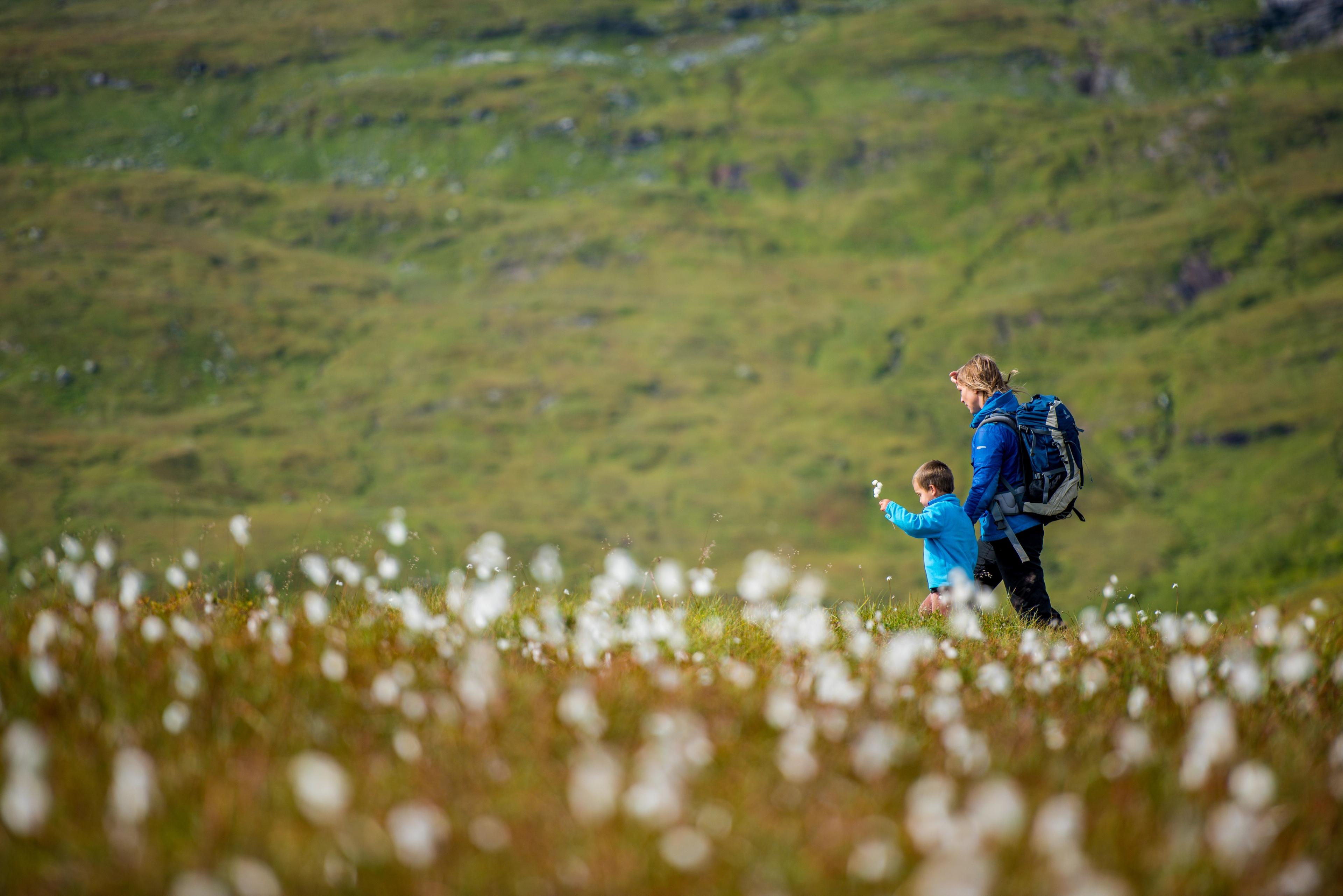
The Arctic Train on the Ofot Line: 10 Historical Facts
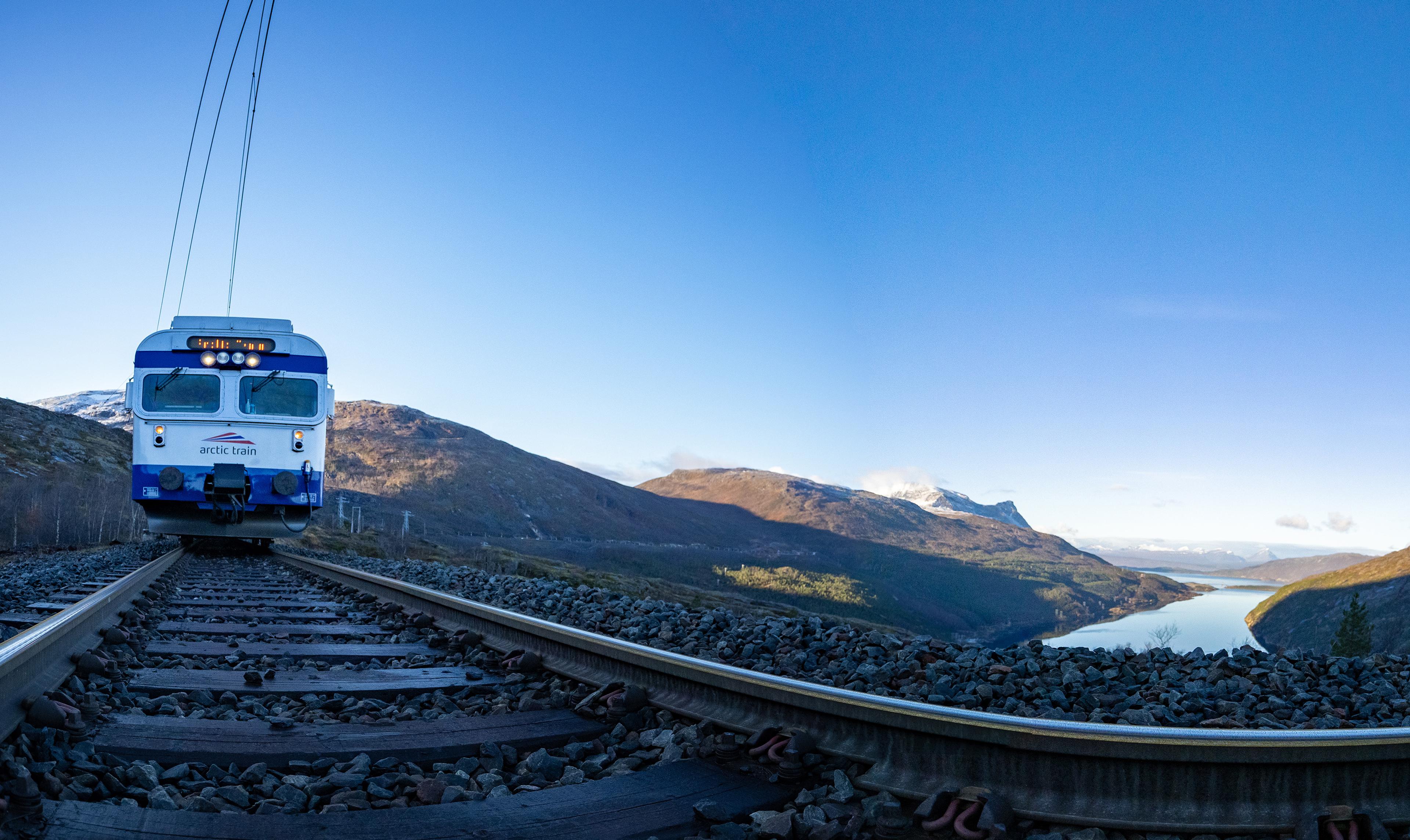
A train journey with The Arctic Train on the 42-kilometre long Ofotbanen railway line is not only a trip with views to fantastic arctic nature. On the journey between Narvik and the Swedish border you also get to experience industrial history, construction history, and not least Narvik’s interesting war history. Continue reading and get more out of your train journey.
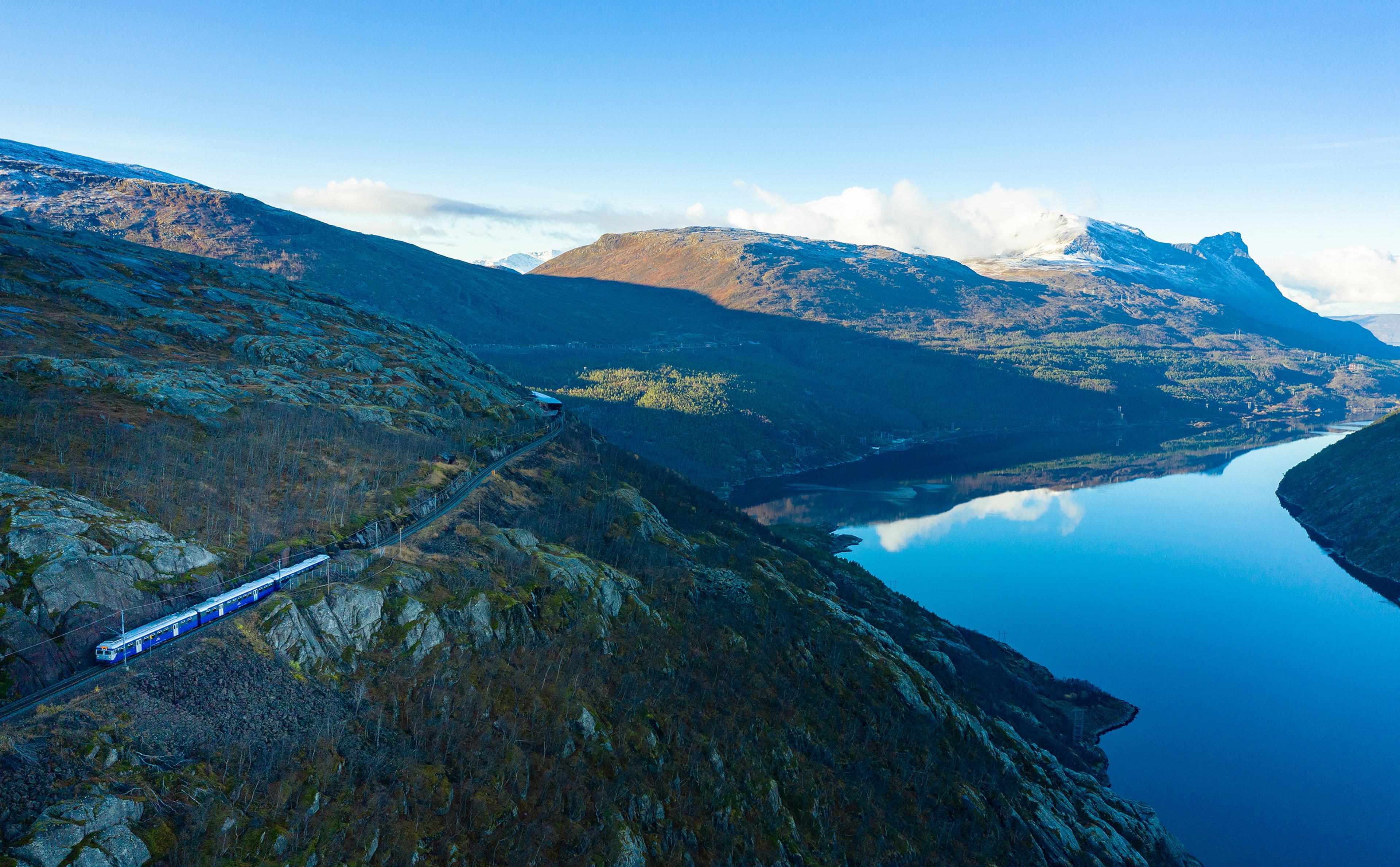
1. The railway’s history begins with the Gulf Stream
The rich iron ore reserves in northern Sweden was discovered as early as the 17th century. The only problem during the following centuries was how to ship the ore out of the Swedish wilderness. For a long time, they tried using reindeer and boats on rivers and lakes. When the railway and locomotives were invented in the early 19th century new solutions came up on the sketch boards. They first thought of making a route in direction Bottenvika and the Baltic sea. The problem here was that the sea froze during winter.
The Norwegian coastline, on the other hand, was heated by the Gulf Stream. The Ofot fjord by what today is known as Narvik was free of ice year-round. Remember that Norway and Sweden were a united kingdom at the time.

The Arctic Train
På togstrekningen fra Narvik til Abisko på svensk side av grensen, går Arctic Train gjennom et unikt, vakkert og skiftende landskap - fra fjorder til høyfjell.
- 2-4 hours
- All year
- Easy
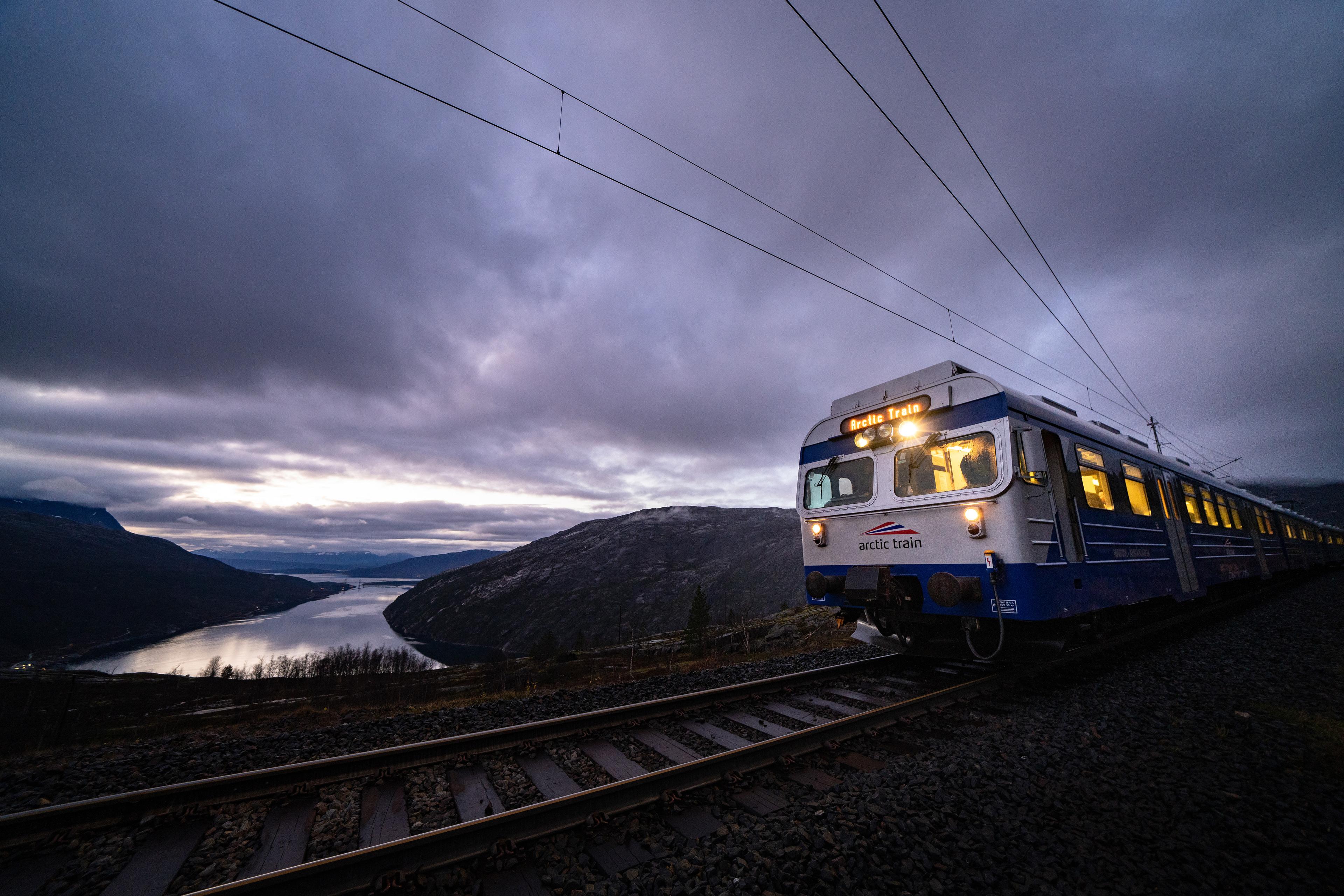
2. Englishmen started the railway project
The British took an early interest in the Swedish ore deposits and invested in both mines and railway project. They first started in the direction of the Baltic sea, but in 1882 they were granted license to start building railway tracks towards the Ofotfjord and the port they called Victoriahavn after the British queen. When the Swedish and Norwegian Railway co Ltd. after a while went bankrupt, they had managed to finish parts of the railway route and 8 kilometres of track on the Norwegian side og the border.
Norwegian and Swedish government decided in 1898 to complete the railway, one of the most extreme construction projects in Norwegian history.

3. The harsh life of the construction workers
There were several large railway projects going on in the time before 1900 and much of the work were executed by hand. Both engineers and construction workers were brought in to the Ofot-area. Navvies, called rallar in Norwegian, were travelling construction workers, often from Sweden, which got a central role in the development of several railway lines across the country including the Ofot line.
The landscape and climate made working on the Ofot line especially harsh, and definitely not for everyone. The workers had to endure severe cold temperatures, darkness and winter storms. To easier ship materials up into the mountains, they first had to establish a construction road from Rombaksbotn by the fjord to the Swedish border. This was also done before the Bergen line between Oslo and Bergen was built. These roads were called after the navvies that made them; Rallarveien next to the Ofot Line and Rallarvegen next to the Bergen Line.

4. Rombaksbotn – the city that only lasted 5 years
Before the construction started, there were only a few people living in Rombaksbotn, at the inner end of the fjord. They were traditional farmers during summer and fishermen during winter. In 1898, peace was broken for the fishfarmers. Barrack and houses for engineers and navvies where built on the large field by the fjord.
Shortly after, hotel, a grocery store, bakery and bowling turned up. The navvies had money to spend, and two sisters noticed the potential for a brothel. They recruited women on the quay with promises of nice dresses. Police station and prison was established too.
On the most, 500 – 700 people lived in Rombaksbotn. A big fire after the railway was completed left Rombaksbotn with nothing but Norway’s shortest and strangest urban history. Today, only the foundations remain.
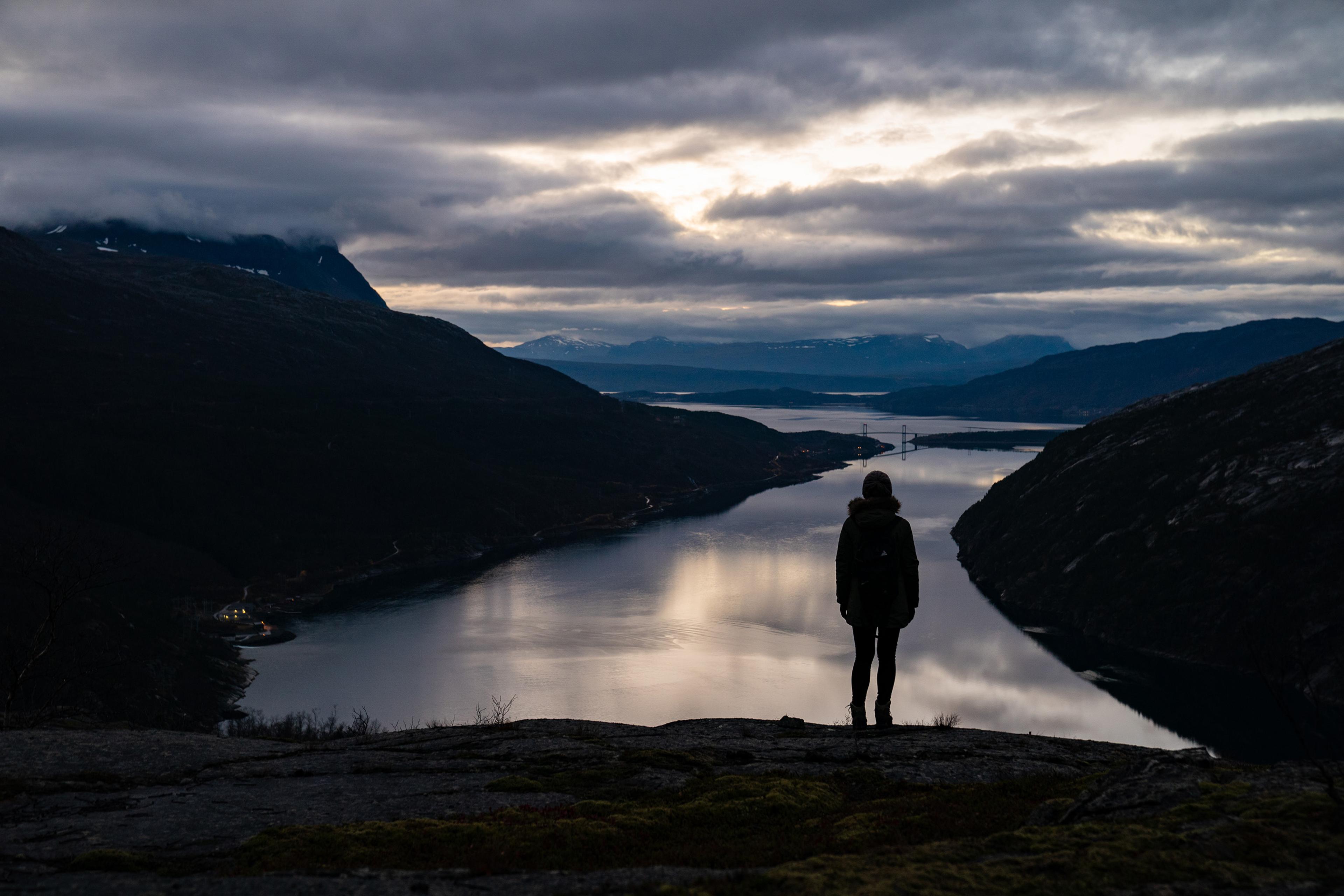
5. Victoriahavn becomes the market town of Narvik
The area the British called Victoriahavn was also just a few farms before the railway. In 1901 the government decided to establish a market town here and gave it the name Narvik. The city was founded in 1902, the same year the Ofot Railway Line opened.
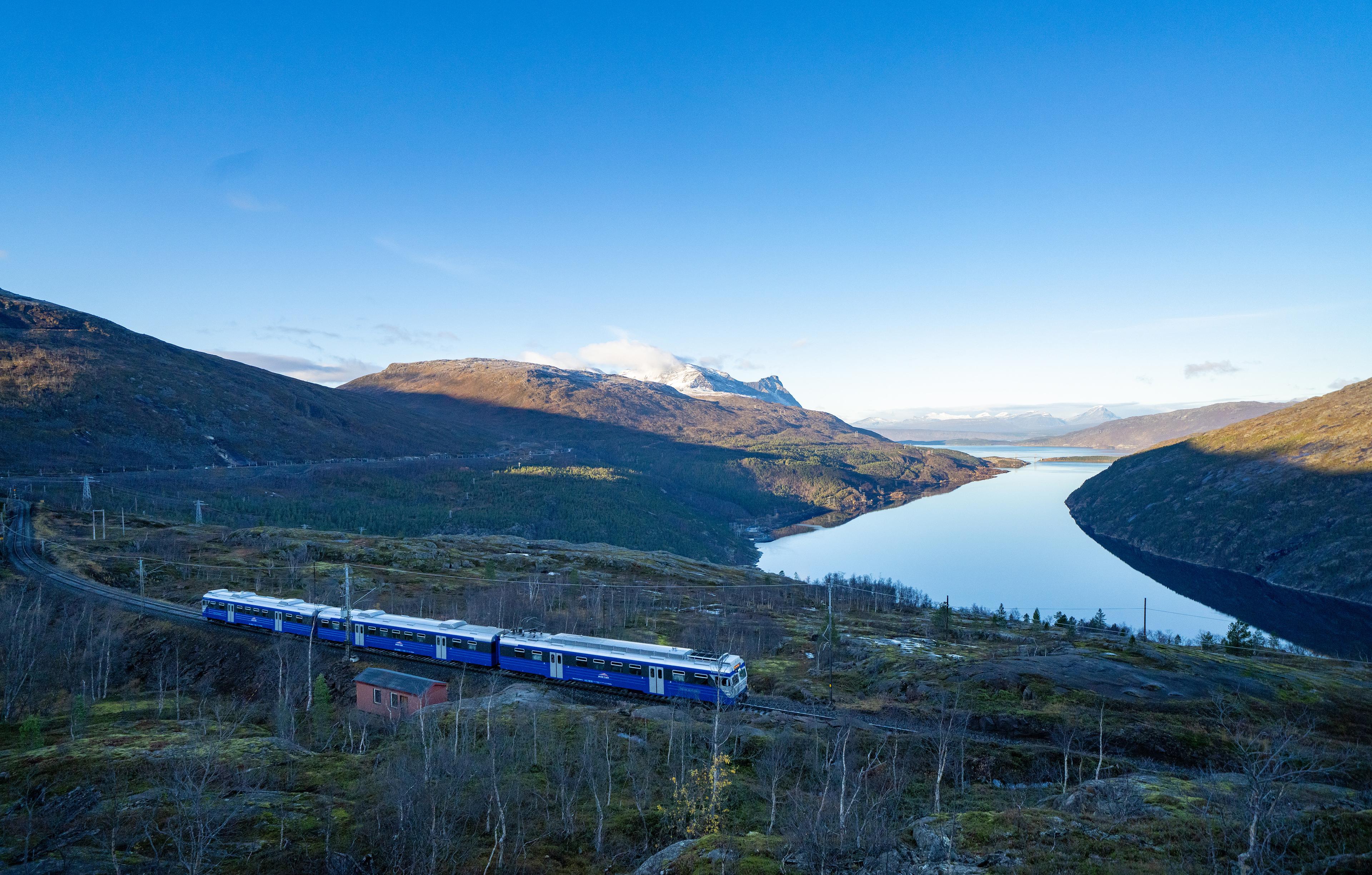
6. Narvik gained international interest in the days prior to 9th April 1940
Close to 40 years later the railway line is internationally known for its transportation of large amounts of iron ore. The Second World War had started and while Norway is still neutral, both Germany and the Allies had their eyes directed towards Narvik. In a time of war, access to iron is essential to produce everything from airplanes to weapons. Among others, the New York Times followed the situation almost daily.
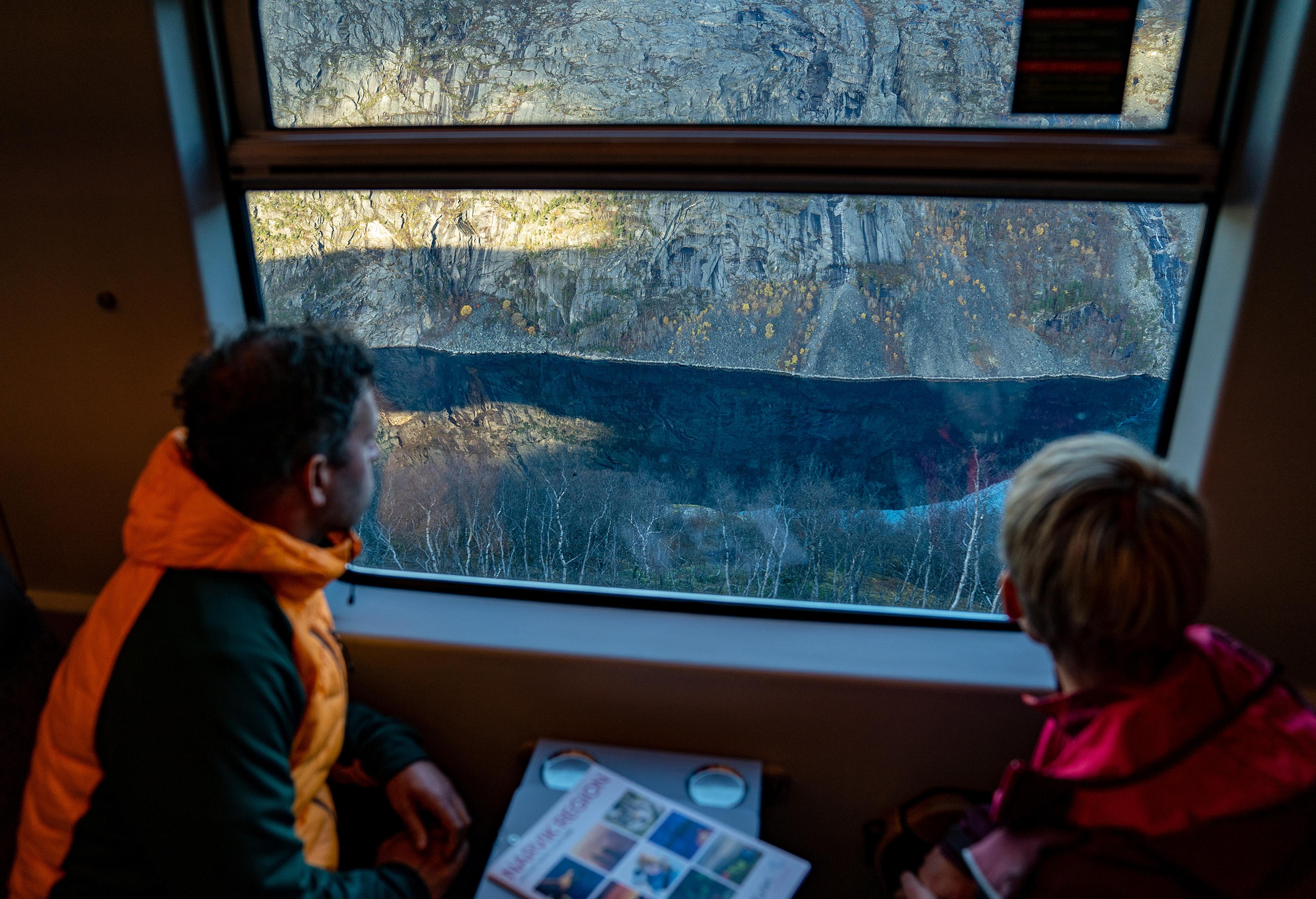
7. The fjord became a large ship cemetery
A military landing in Narvik was a strategic part of Germany’s attack on Norway. German forces landed on the 9th of April 1940, after going under the radar of British warships and sinking two Norwegian armoured ships. On 10th and 13th April, there were major naval battles between British and German fighters on the fjord. It ended with the entire German fleet of 10 ships being sunk, while the only got damages. This is how the fjord outside Narvik ended up as a large ship cemetery. The remains of the German fighter Georg Thiele are still visible in the Rombak fjord below the railway.

8. The bridge that could not blow up
The bridge that could not blow up When the Ofot railway line was built, the 40-metre tall Norddalsbrua bridge across Norddalen valley, was prefabricated in Germany. The bridge was designed exactly for a situation like this. With blasting chambers along the sides of the bridge, it should be possible to blast in a war situation and effectively shut down the iron transport. But when it came down to it, it turned out that the chambers were frozen, and the bridge remained standing.
In 1988, the railway was laid outside Norddalsbrua, but you can still see it from the train at Søsterbekk station.
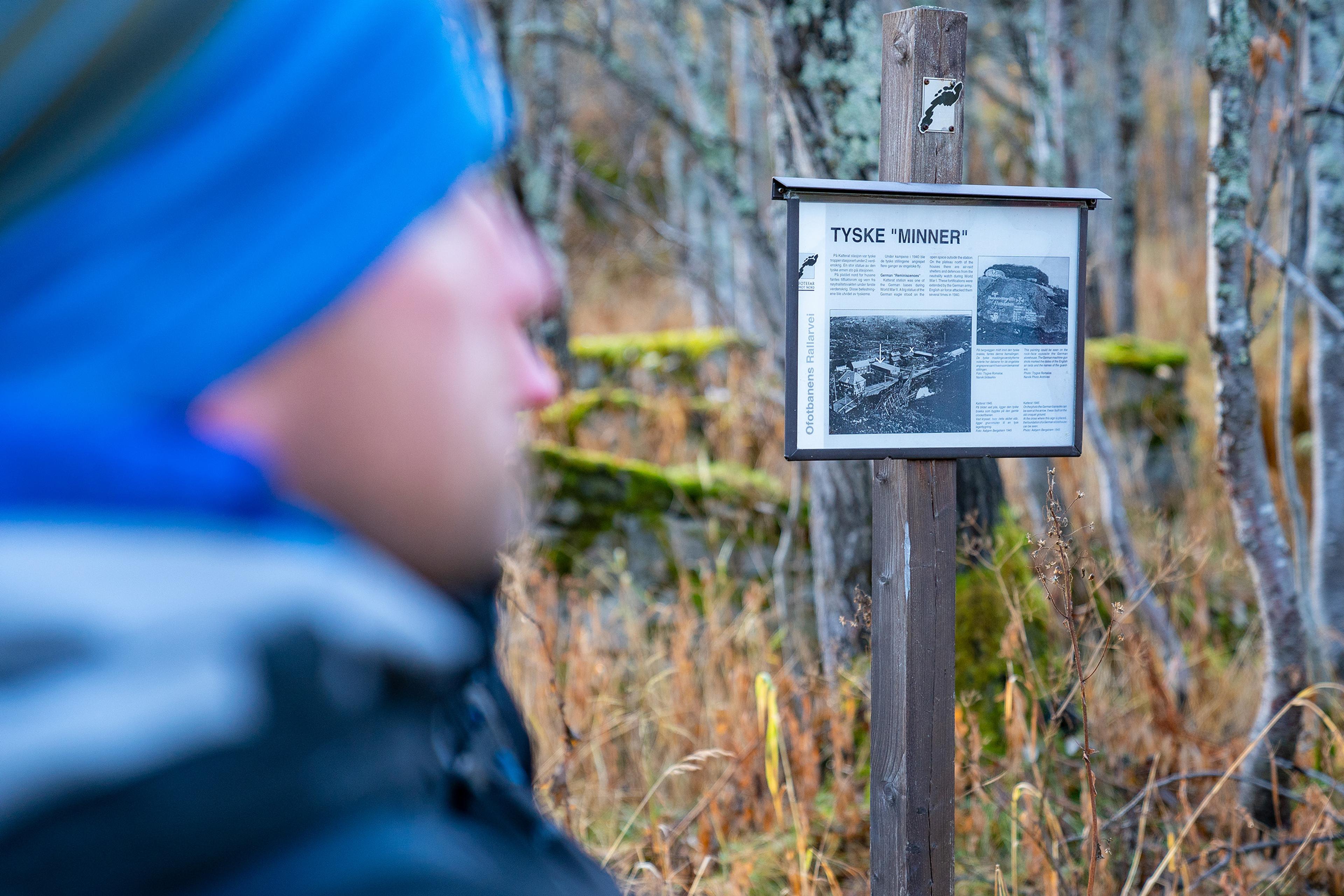
9. The Battles of Narvik lasted for 62 days
In order to secure the railway, Norwegian forces had already ventured up to Bjørnfjell at the Swedish border on the morning of 9 April. Over the next two months, several major battles were fought near the railway, and the Allies contributed with troops from Poland, France and Britain. The German troops were isolated by the border but received reinforcements via plane and the Swedish railway. On the 28 May 1940, the Allies recaptured Narvik. They held the town for a few days until they had to evacuate due to the increasingly tense situation on the European mainland. Southern Norway had already capitulated and on 10 June Narvik also capitulated.
The Battles of Narvik lasted 62 days and claimed 8,500 lives.
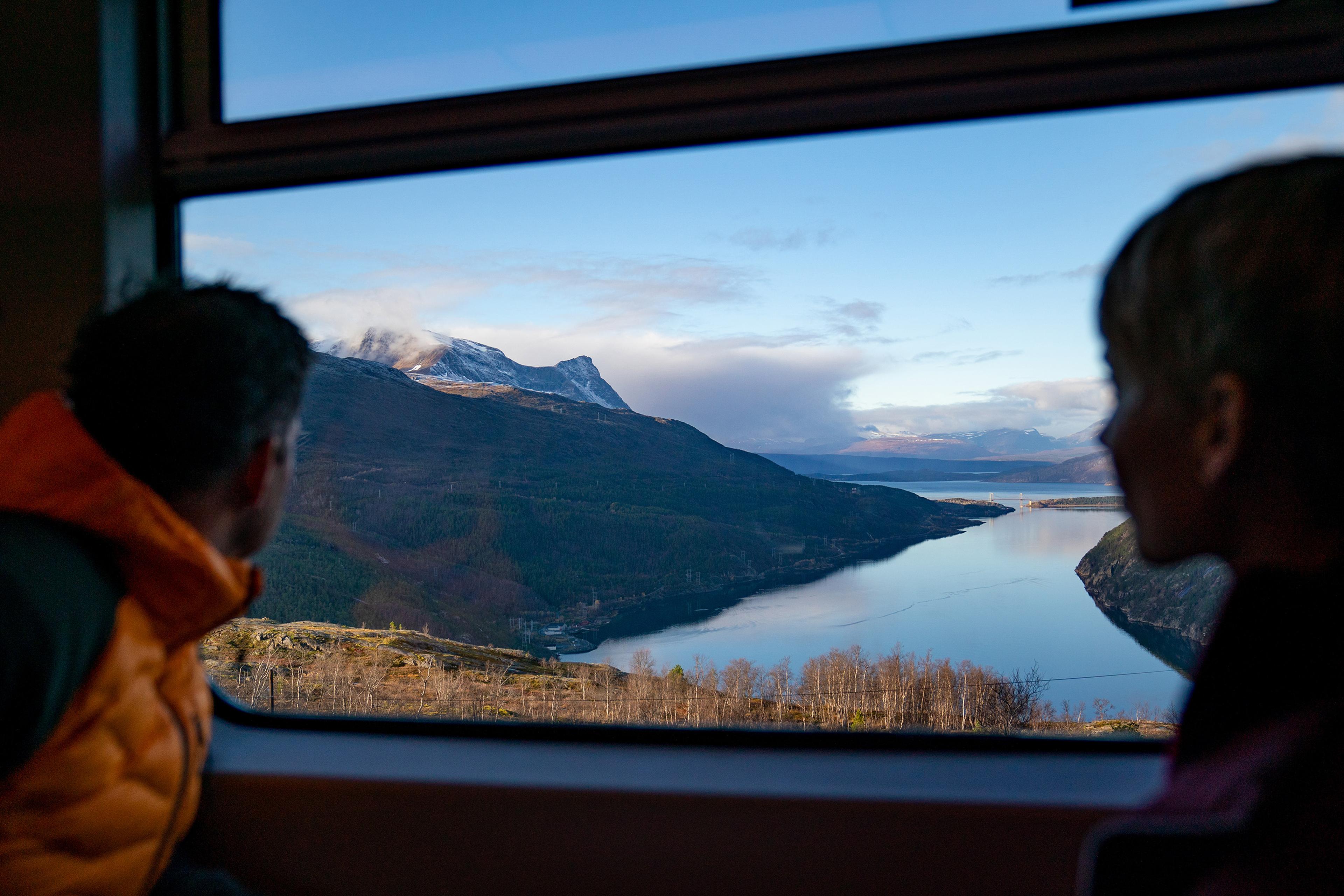
10. The Ofot line has shipped more than 1 billion tons of iron ore
The Ofot line was electrified as early as in 1923, and transportation of iron ore is still its most important function. Daily there are 10-12 iron trains running the stretch from Kiruna to the port in Narvik. Each train carries 68 wagons containing 100 tons of ore each. That is enough iron for 68.000 cars! No wonder they must use the strongest locomotives on the market. In the railway’s almost 120 years history it has shipped more than 1 billion tons of iron ore.
In addition to the ore, 90% of the grocery supplies from Southern Norway to Northern Norway is transported by freight train via Sweden to Narvik.
Ever since Bjørnfjell Station opened in 1925, the area has been a favourite among the locals for its great terrain for skiing and hiking. When The Arctic Train opened in 2020 this became even more available. Did you know that it is only a 15-kilometre walk Norway across from Riksgränsen on the border to Rombaksboth? It is also possible to take a shorter walk from Katterat Station to see the remains of the once so lively town by the fjord.

